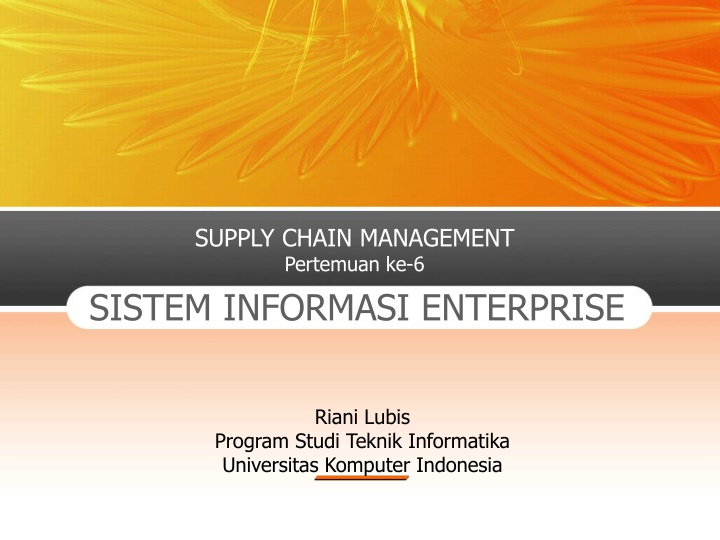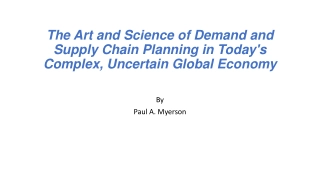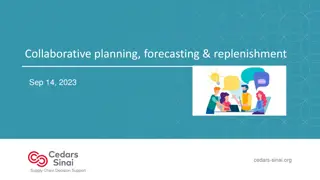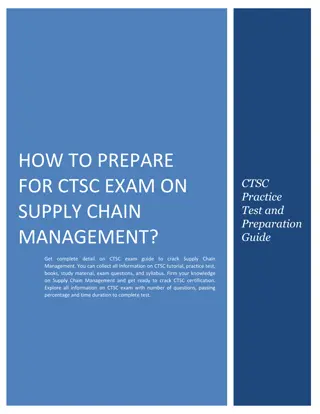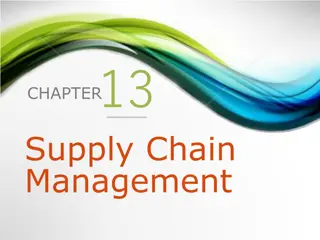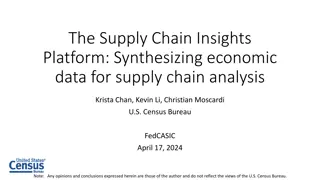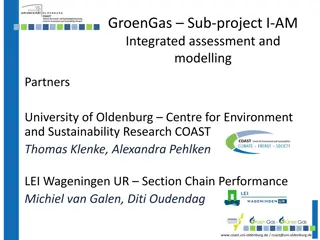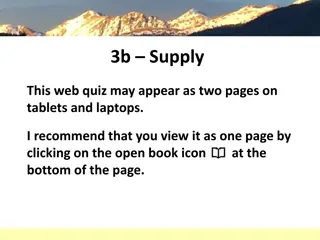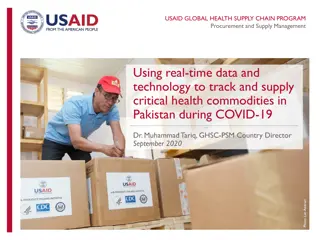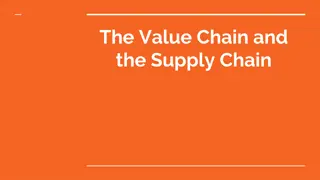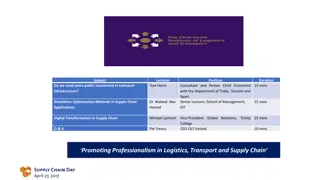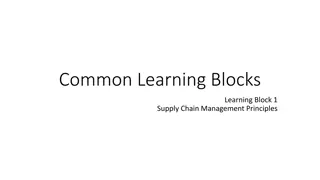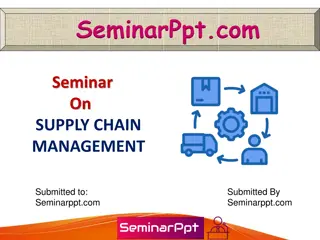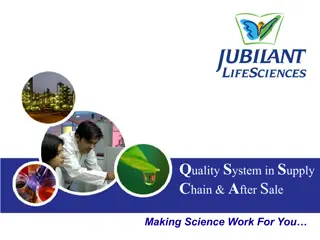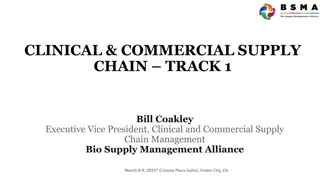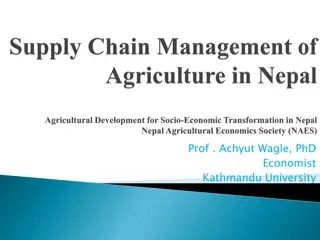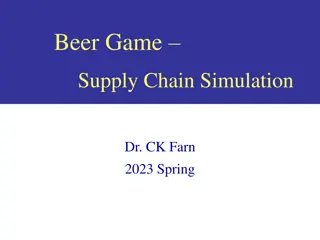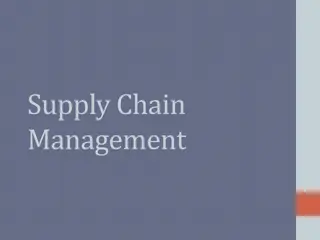Understanding Supply Chain Management
Supply chain management involves efficiently integrating suppliers, factories, warehouses, and stores to produce and distribute merchandise in the right quantities, locations, and time to minimize costs and meet customer service requirements. It encompasses managing activities related to vendors and customers in the value chain, procurement, demand tracking, and technology-enabled processes. The goal is to deliver the final product or service to the end customer through a network of suppliers, manufacturers, distributors, and retailers. Various flows within the supply chain include cash, products and services, and information.
Download Presentation

Please find below an Image/Link to download the presentation.
The content on the website is provided AS IS for your information and personal use only. It may not be sold, licensed, or shared on other websites without obtaining consent from the author.If you encounter any issues during the download, it is possible that the publisher has removed the file from their server.
You are allowed to download the files provided on this website for personal or commercial use, subject to the condition that they are used lawfully. All files are the property of their respective owners.
The content on the website is provided AS IS for your information and personal use only. It may not be sold, licensed, or shared on other websites without obtaining consent from the author.
E N D
Presentation Transcript
SUPPLY CHAIN MANAGEMENT Pertemuan ke-6 SISTEM INFORMASI ENTERPRISE Riani Lubis Program Studi Teknik Informatika Universitas Komputer Indonesia
What is a Supply Chain? The network of external suppliers, internal processes, and external distributors, and the links connecting them, that deliver a finished product or service to the customer. The system of suppliers, manufacturers, transportation, distributors, and vendors that exists to transform raw materials to final products and supply those products to customers. RNL - 2014
Defining SCM SCM is : The process of effectively managing the components of an extended value chain--from manufacturing and distribution consumers. The coordination of all organization from its suppliers and partners to its customers. The integration of the activities that procure materials and services, transform them into intermediate goods and the final product, and deliver them to customers. The integration of business processes from end user through original suppliers, services, and information that add value for customers. suppliers, chain, through to and the supply activities of an that provide products, RNL - 2014
SCM The management of all activities and processes related to both upstream vendors and downstream customers in the value chain Tracking and managing demand, inventory, and delivery Procurement and vendor relationship management Technology enabled Upstream supply chain ; Transactions between an organization and its suppliers equivalent to buy-side e-commerce. Downstream supply chain ; Transactions between an organization and its customers and intermediaries, equivalent to sell-side e-commerce. and intermediaries, RNL - 2014
The Goal of SCM Supply chain management is concerned with the efficient integration of suppliers, factories, warehouses and stores so that merchandise is produced and distributed: In the right quantities To the right locations At the right time In order to Minimize total system cost Satisfy customer service requirements RNL - 2014
Supply Chain Supplier Manufacturer Distributor Retailer Customers
Ex : Dairy Products Supply Chain RNL - 2014
Flows in a Supply Chain Cash Products and Services Information N-Tier Suppliers Suppliers Manufacturers Distributors Retailers Supply Side Internal Demand Side Demand Supply RNL - 2014
Approaches to SCM In Push systems, work release is based on downstream demand forecasts Keeps inventory to meet actual demand Acts proactively In Pull systems, work release is based on actual demand or the actual status of the downstream customers May cause long delivery lead times Acts reactively RNL - 2014
Push Approach to SCM RNL - 2014
Pull Approach to SCM RNL - 2014
Supply Chain Processes RNL - 2014
